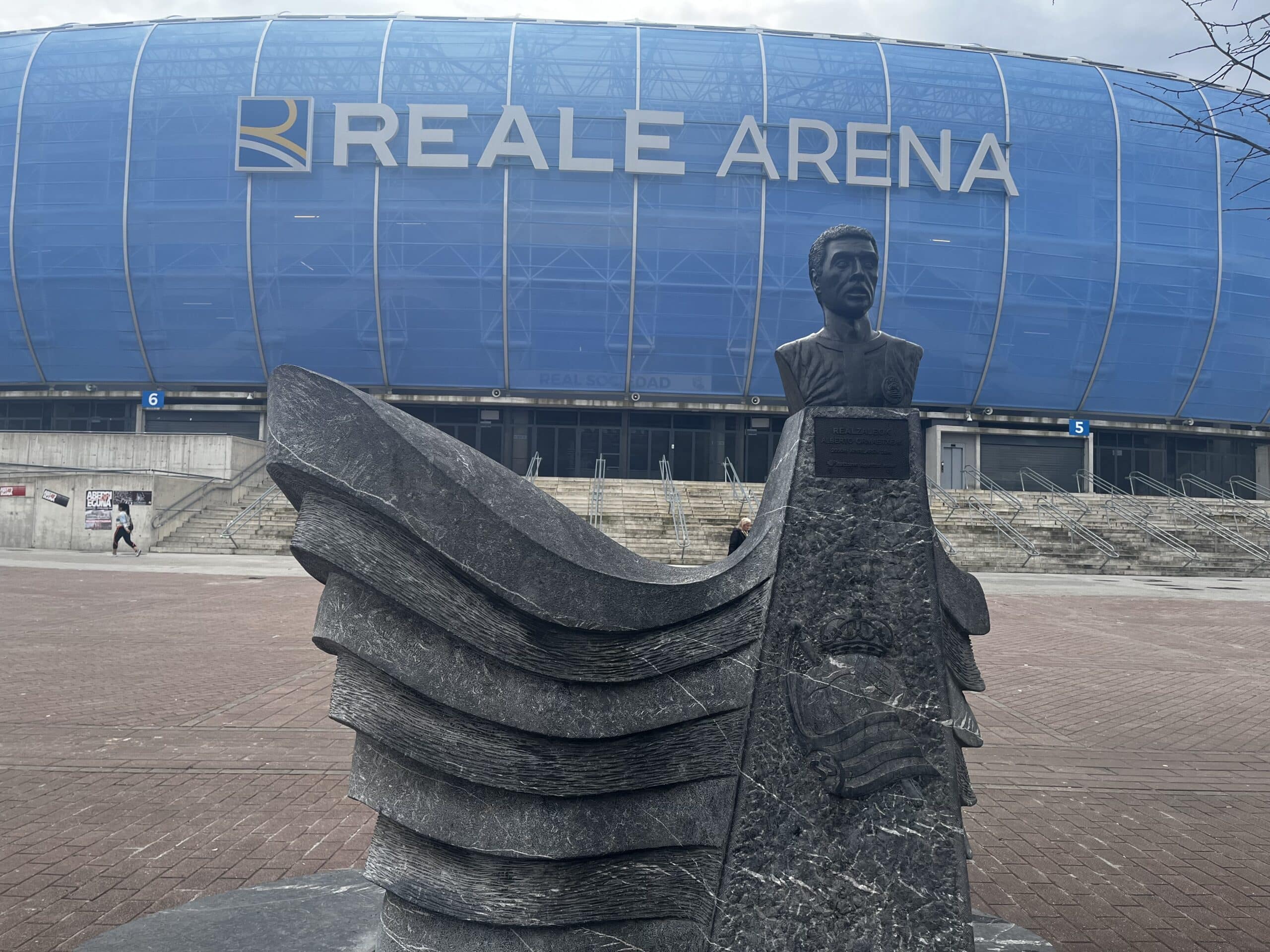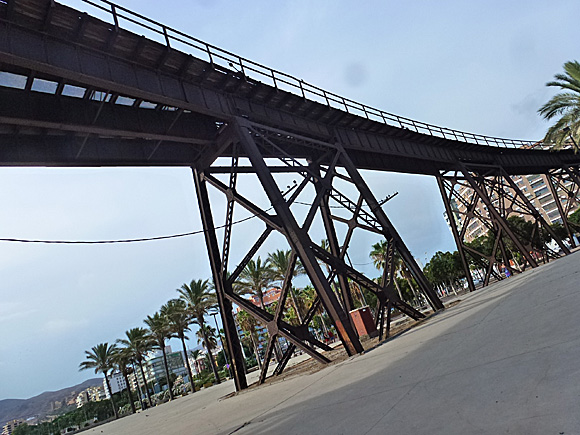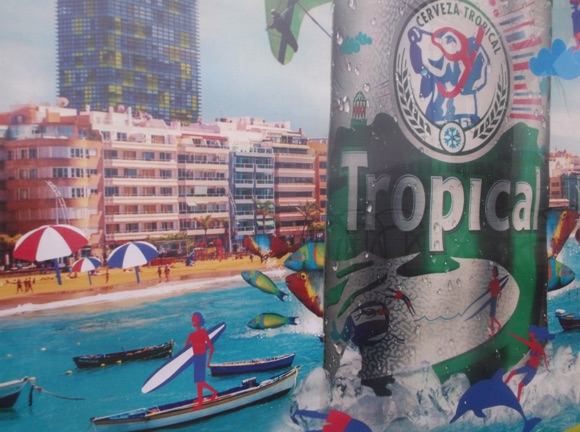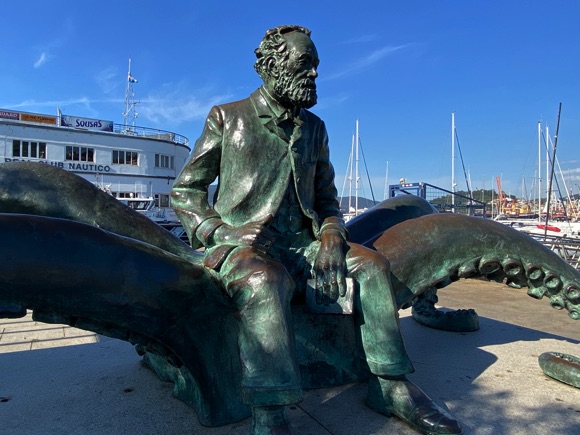Teams, tales and tips – a guide to the local game
Close to the French border, San Sebastián, Donostia to proud Basque-speaking locals, is a gracious seaside resort and contemporary gastronomic mecca where royals and high society mingled a century ago. Support for flagship club Real Sociedad isn’t quite as feverish as at rivals Bilbao, and the stadium isn’t as cherished (nor as centrally located).
Twice Spanish champions in the early 1980s, Real Sociedad have been regular European competitors since the club’s surprise top-four finish in 2013. An emotional win over Bilbao in the Spanish Cup final of 2020, played in an empty stadium in 2021, resulted in the first major silverware for the Txuri-Urdin since 1987.
Since 2019, the likes of Manchester United, Napoli and PSV Eindhoven have strode out at a completely rebuilt Anoeta Stadium, which now goes by its sponsor’s name of the Reale Arena. Lower rows of seating occupy the gap where the running track once was, and a former functional and multi-functional resource is now fully focused on football.
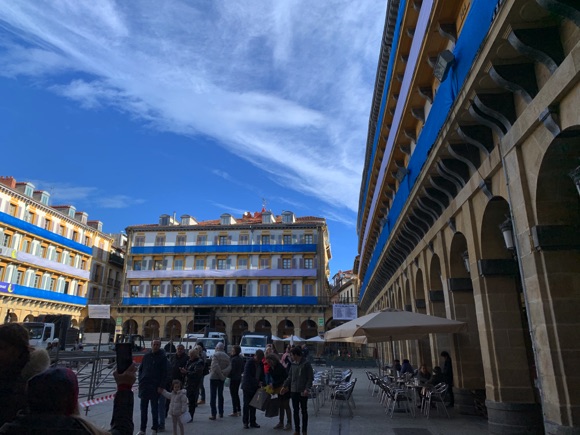

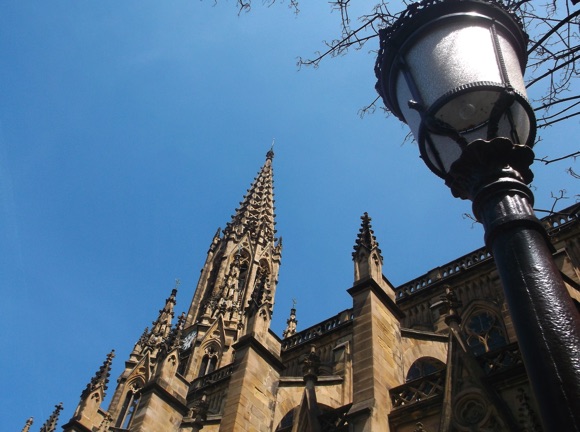
Shortly after that penultimate cup win, Real Sociedad dropped their policy of signing only Basque players. In the late 1980s, the club created a storm by signing distinctly non-Basque John Aldridge, then Dalian Atkinson, while Bilbao remain firmly Basque to this day.
Like Bilbao, San Sebastián has been sport mad ever since it was first organised locally. The Basque Country is the cradle of Spanish football, linked with industrialisation and the British influence in the late 1800s. English engineers brought football to Bilbao, while another trend was for sons of wealthy local industrialists and merchants to gain their education in England and bring the new game of football back home – as was the case in San Sebastián in the early 1900s.
Players who had won the Spanish Cup for ‘Club Ciclista San Sebastian’ in 1909 – the first two goals coming from Englishmen McGuinness and Simmons – were formed into La Sociedad de Foot-Ball de San Sebastián that September.
‘Sociedad’ earned their royal (‘Real’) title a year later.




The club first played on the beaches of Ondarreta before moving to a modest ground by the railway station, Atotxa, in 1913. Inaugurated with a game against Athletic Bilbao on October 4 – in honour of mourned ex-captain José Berraondo – this unusual, intimate ground staged 80 years of football. Most famously, it saw the last-gasp title win over Bilbao in 1982, before its curtain closer against a Basque XI a decade or so later.
The Basque derby has always been a display of regional solidarity against Spanish rule – amid low-key animosity between the two clubs involved. Basque football’s heyday came after Franco’s death. In 1976, the captains of each team jointly displayed the illegal Basque flag to a cheering derby crowd.
Each club would soon win the title twice, practically unthinkable in today’s era of €100 million footballers. Nonetheless, Sociedad have claimed a top-ten spot in La Liga every season but two since 2012, and few teams relish a visit to the Anoeta.




Under the club’s stellar academy graduate and ex-Liverpool star Xabi Alonso, Real Sociedad B, also known as Sanse, actually made the Segunda in 2021, taking on the likes of Málaga and Gijón. An end-of-season decline saw the reserves narrowly fail to survive a first second-tier season for nearly six decades.
To see Sanse face their second-string counterparts from Bilbao and Osasuna Pamplona, head to the club’s HQ at Zubieta, 6km south-west of the Anoeta. For all the brouhaha over Sociedad signing non-Basque players, the recent years of success and stability have been built at Zubieta, nurturing the Alonsos and Griezmanns. Viewed from the blue-and-white coloured Cafeteria Harrobi, the Campo José Luis Orbegozo, the 2,500-capacity home of Real Sociedad B, and the training pitches around it, are where they honed their skills.
The nearest station is Lasarte-Oria, the last stop on the local E2 line, directly linked every 15-30mins with Anoeta five stations away. It’s 1.25km away from Zubieta, easier by taxi as buses don’t cross the Oria river or A1 motorway.




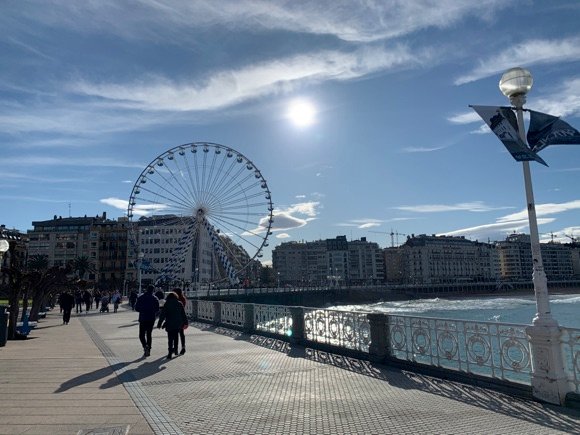
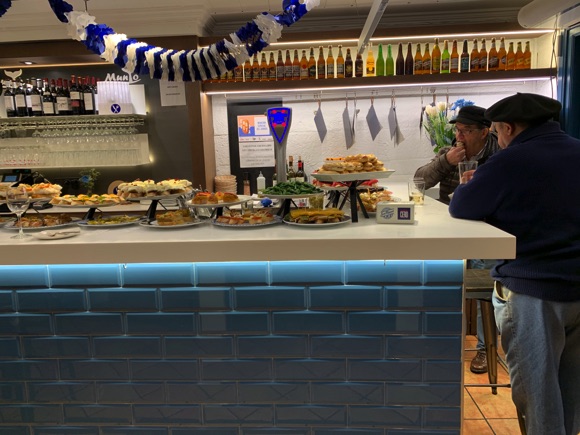
Getting Around
Arriving in town, local transport and timings
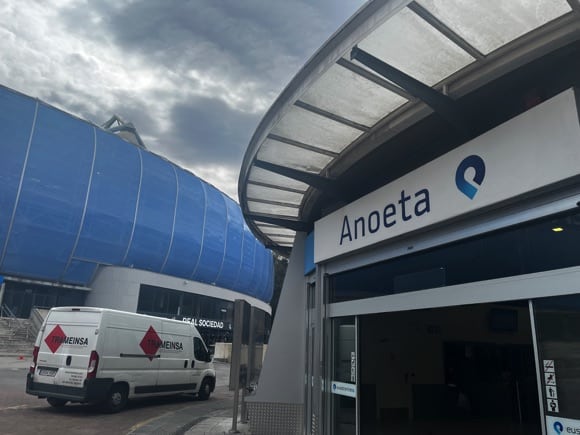

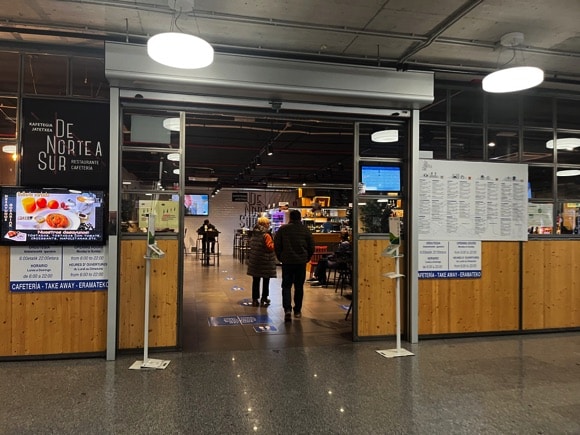
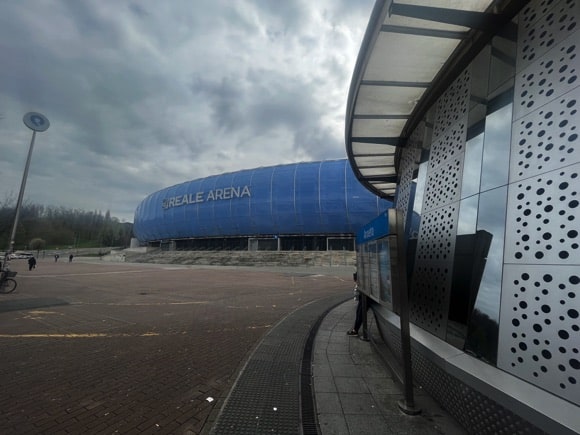
San Sebastián Airport 22km (13.5 miles) north of town is used for mainly for internal flights, as well as a British Airways service from London City. Lurraldi/Ekialde buses (the slower E20/E27 Sat-Sun & hols) and the direct E21, €2.75) run every hour to Gipuzkoa plaza in San Sebastián, referred to as Donostia on timetables. A taxi (+34 943 64 64 64) to town is priced around €40, cards accepted.
The nearest main international airport is Biarritz 50km (31 miles) away, with direct transport links by bus. Between them, French BlaBlaCar and Spanish Alsa run to San Sebastián around every hour, journey times 45mins-1hr 20mins, single tickets €4-€20, the sooner you book, the cheaper. You can book with either company through BlaBlaCar bus online. Flixbus runs San Sebastián (90min journey time) three times a day on its Toulouse-Côte Basque route. A single ticket is €7-€12, again, cheaper with advance booking. A taxi (+33 787 01 04 05) from Biarritz Airport to San Sebastián should cost around €150.
Bilbao Airport is 90km (56 miles) away. A half-hourly PESA bus runs directly to San Sebastián (€17, 1hr 20mins). A taxi (+34 944 800 909) to San Sebastián should cost around €160.

Buses come into Estación Donostia Geltokia at Federico García Lorca Pasealekua 1, just over Maria Cristina Zubia bridge from the city centre. Trains come into the main station of Amara Donostia, south of the city centre, halfway to the stadium on the southern fringe of town.
Euskotren trains also call at several local stations in San Sebastián, including Anoeta alongside the stadium, one stop from Amara. From the centre of Bilbao, the most convenient station is Zazpikaleak/Casco Viejo in the Old Town, intersecting with Bilbao’s metro network. It’s €6.50 to San Sebastián, 2hrs 45mins journey time, the E1 line running hourly. Local Euskotren lines E2 and E5 also connect Amara with Anoeta (€1.85) every 15-30mins, 3min journey time.
A MUGI card valid for all transport in town and the surrounding region of Gipuzkoa costs €5 from newsstands and many other outlets. You can upload credit easily from machines at stops and stations. Click on ‘Donostia San Sebastián’ on the MUGI site to find your nearest one. The same card can be used by several people if you’re using Dbus city buses (MUGI single €1.26/regular €1.85), the main form of urban transport apart from local trains. Euskotrens only allow one traveller per card. Note that Bilbao’s Barik card (€3, min initial recharge €5) is valid for both the train journey to San Sebastián and Dbuses around the city.
For a local taxi in San Sebastián, call +34 943 46 46 46.
Where to Drink
The best pubs and bars for football fans
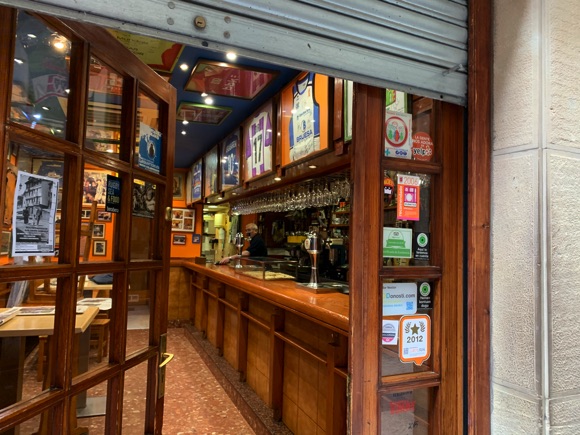




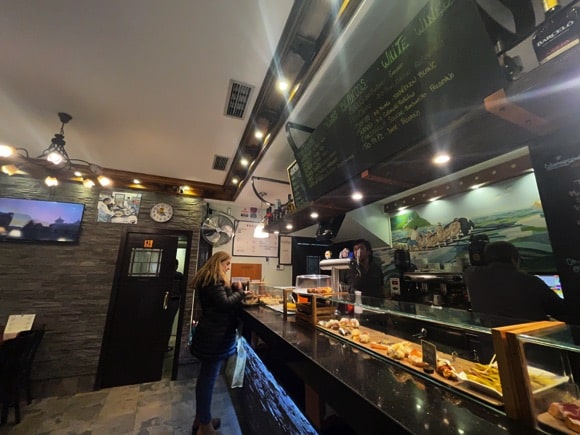
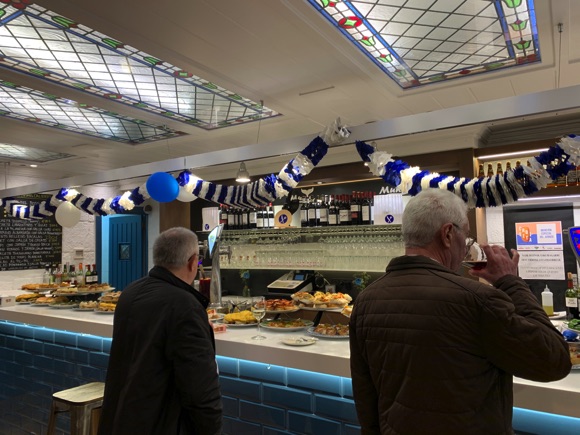



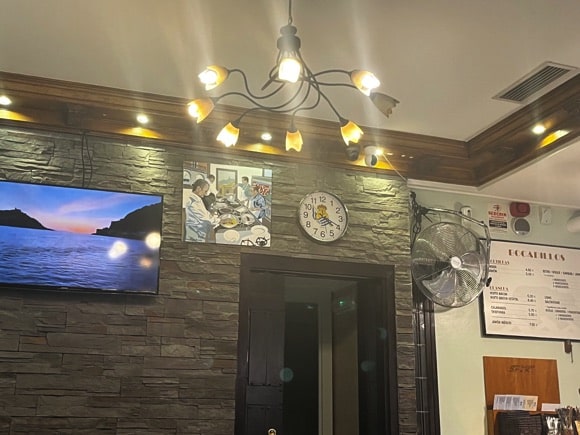
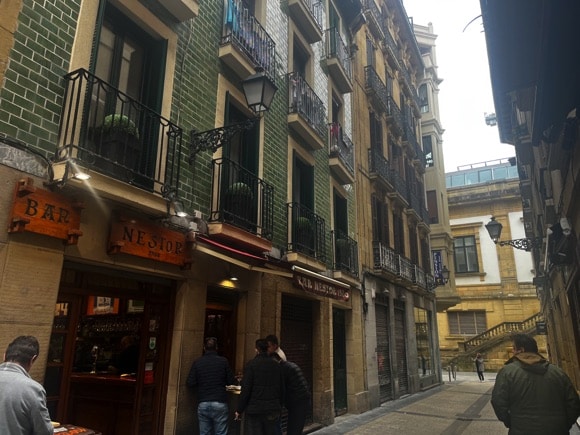

Gastronomy rather than beer is San Sebastián’s speciality – which means that while you’re carousing, there are delicious pintxos to be had, irresistible tapas tastefully laid out on the bar counter.
Bar life is concentrated in the maze of street in the Parte Vieja, the Old Quarter, where you’ll find the excellent Bar Sport (Fermín Calbetón Kalea 10), the focus on TV football, and top pintxo spot Munto at No.17.
The next street over, Arrandegi Kalea, hides the football haunt Bar Néstor, lined with framed football shirts. Corner Haizea on nearby Aldamar Kalea is another lively pintxo place.
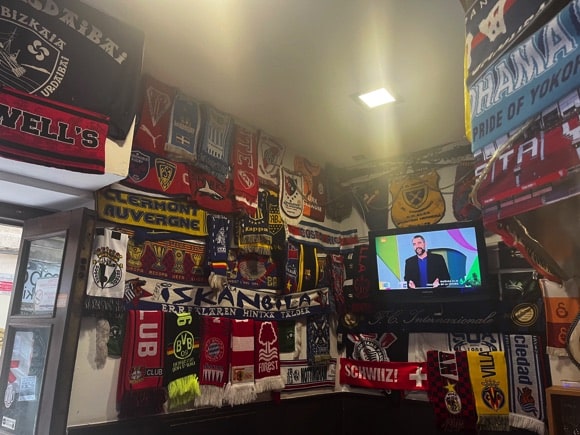
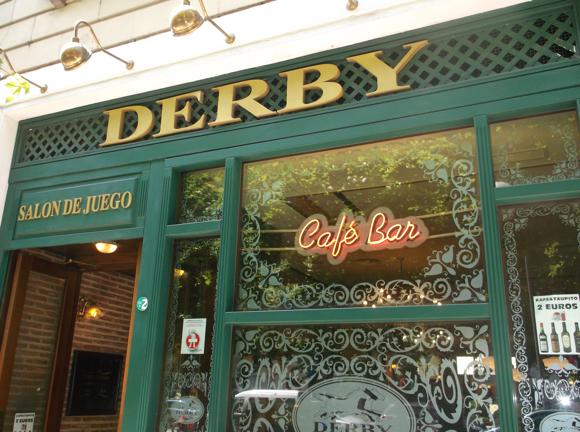


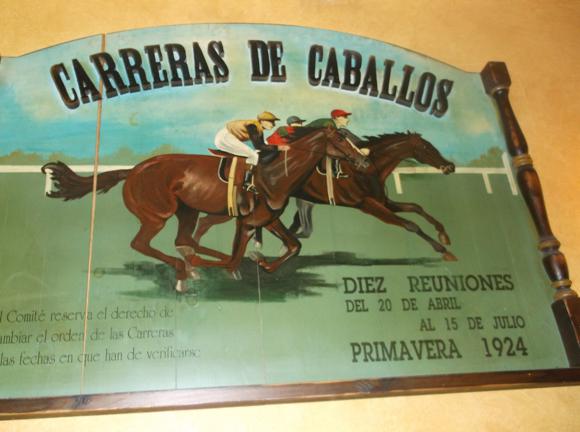


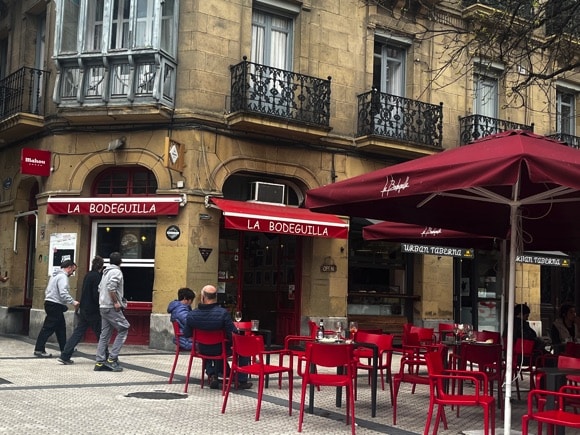

In the same vicinity, don’t miss the Piñudi Taberna on Narrika Kalea, a cosy spot crammed full with football scarves and shirts. There’s TV action, too, plus wonderful pintxos.
If you’ve just arrived at Amara station, sport is the main feature at Bar Derby (Antso Jakituna Hiribidea 19-21) nearby.
Real Sociedad iconography colours the walls and back bars of several spots around Easo, the small square immediately in front of Amara station, including bullfighting-focused La Bella Easo and TV-equipped La Bodeguilla, its tables covering one corner of the square.

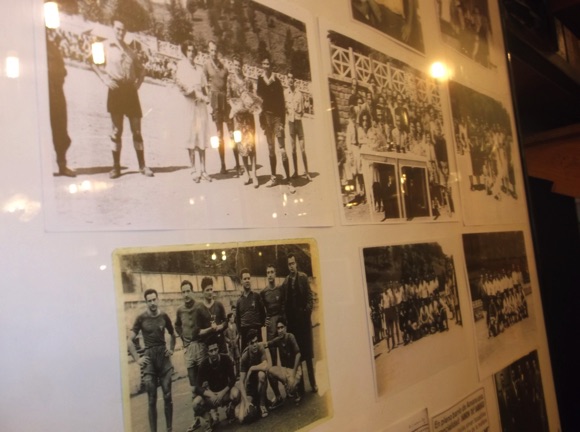
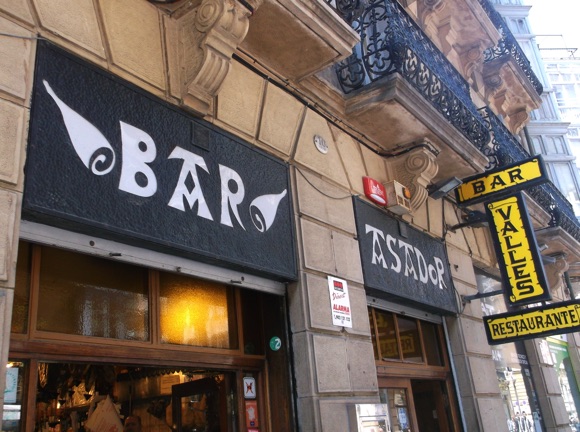

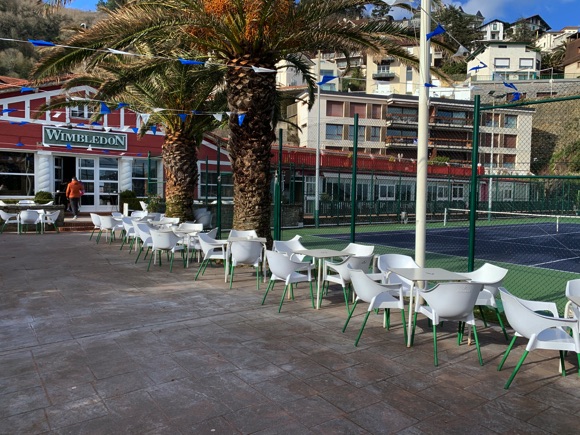
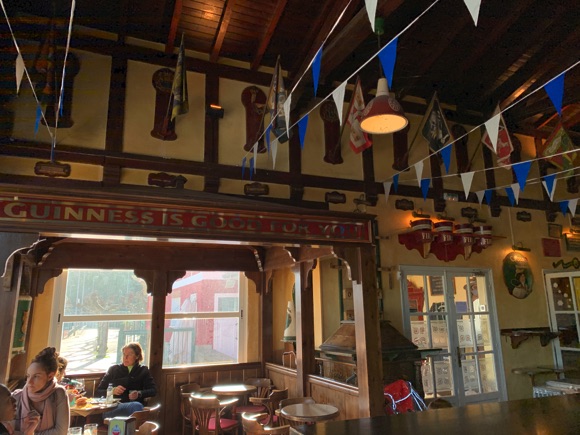




Bars line pedestrianised Errege Katolikoen/Reyes Católicos immediately behind the cathedral. These include the contemporary Splash, the traditional Bar Vallés, which makes no secret of its support of Osasuna, and the lively Pub Drop, with its many screens for sport and numerous taps for craft brews, 19 at the last count.
Near the seafront, anchoring one tip of sweeping La Concha Bay, Wimbledon is a pub-like operation attached to the Onderreta Tennis Club by Funikular Plaza. The main Irish bar in town is Kelly’s (Nafarroa Beherea Plaza 3) in the Gros area of town while nearby Casa Senra (San Francisco Kalea 32) is pintxo heaven.
Where to stay
The best hotels for the stadium and city centre

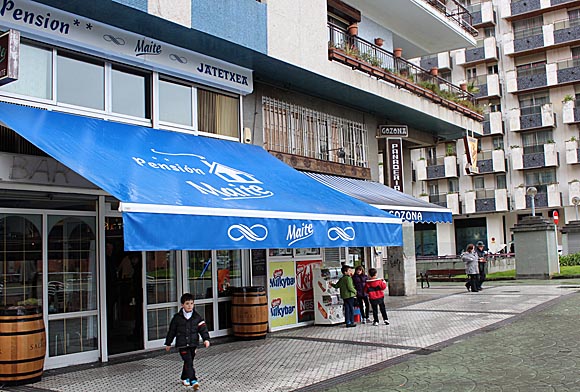
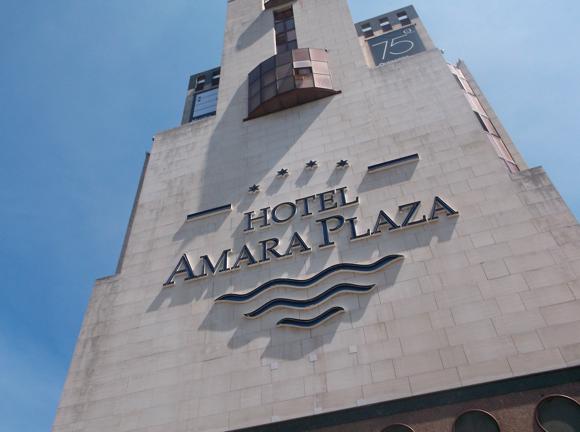

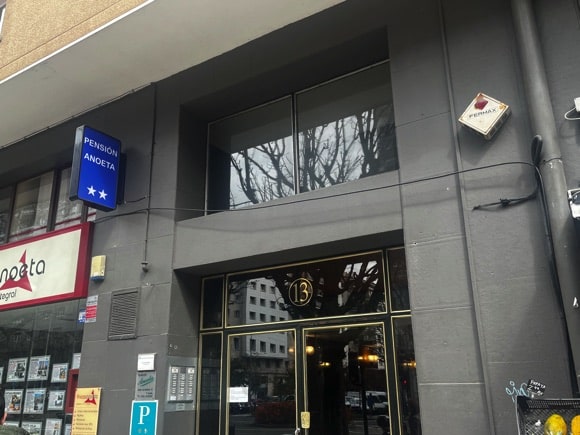




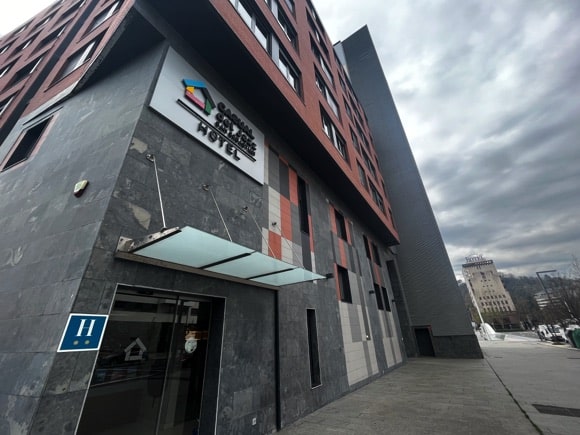
The San Sebastián Tourist Office has an hotel database. Note that rooms will be scarce during the San Sebastián Film Festival in late September.
Across the road from the stadium is red-brick three-star Hotel Anoeta, with 30 plain but comfortable rooms and its own restaurant. Nearby, Pensión Maite is an old-school two-star with a pre-match bar opposite and the Pensión Anoeta (Madrid Etorbidea 13, +34 943 24 52 88) provides simple but convenient comfort.
Right on Plaza Pio XII, convenient for the stadium, the four-star Hotel Silken Amara Plaza offers a higher class of lodging 15 minutes’ walk from the Anoeta. Close by, Zinema7 is the former Astoria 7, given a boutique makeover and a movie theme. Just over the river, Casual del Jazz spices up a mid-range hotel with funky design touches aligned with the name.

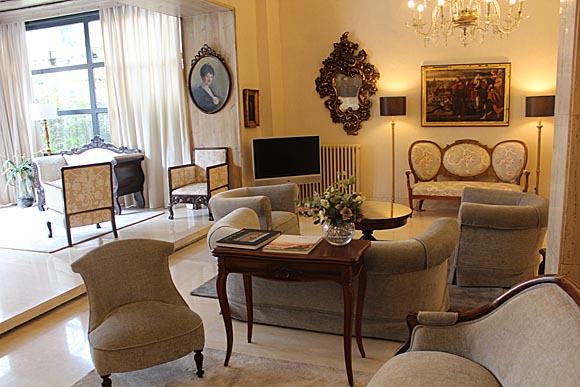


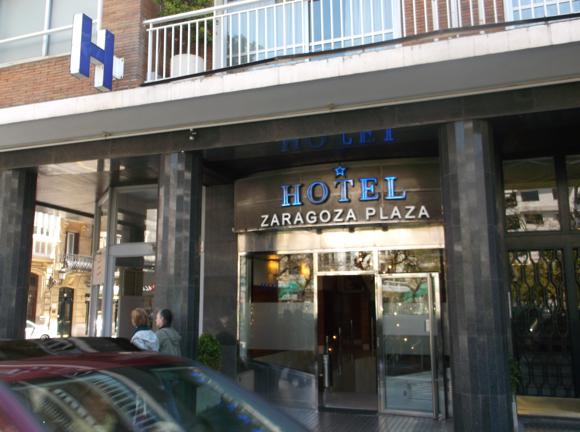


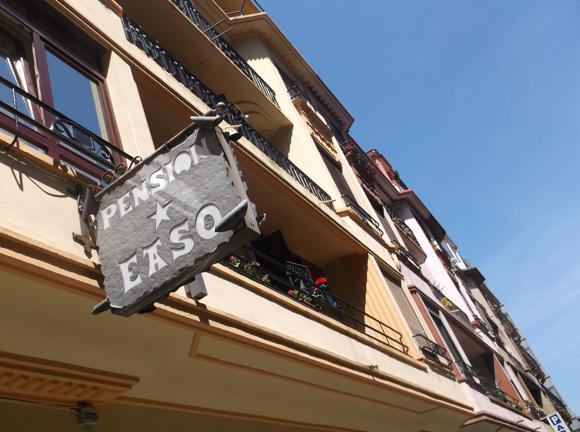
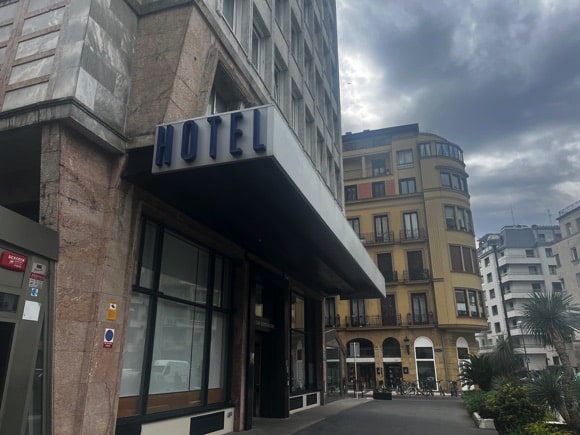


To stay near the beach, the elegant, hospitable Niza makes a mockery of its three-star status, the Sercotel Europa echoes the golden age and the Zaragoza Plaza is more modest than its shiny façade suggests.
Attached to the Meliá group, the San Sebastián Orly only occupies floors eight and up of a functional building overlooking the seafront, meaning striking views if dated rooms in some cases.
Nearby Pensión Easo is a reliable cheapie, as is the Pensión Buenpas, the former Pensión Fany. On the beach itself, the Hotel de Londres is old-style luxury, sea-view rooms taking in the whole bay.



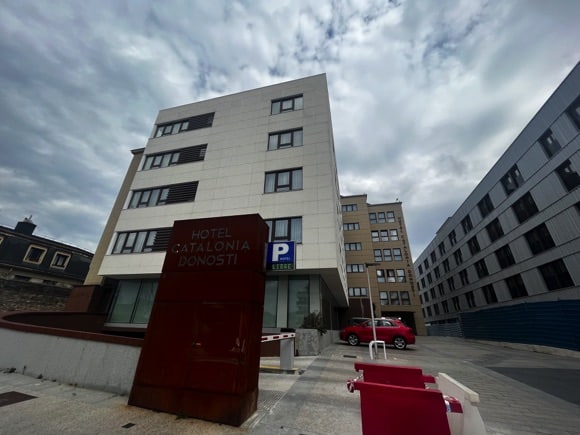
Further towards Amara train station, the Hotel Catalonia Donosti is still close enough to the beach to offer sea views from many of its rooms, even singles. Set in a former convent, this four-star offers you the lap of luxury – spa centre, rooftop pool, panoramic Basque gastrobar – and yet prices when direct booked can be fairly modest out of season.
Even closer to the station, the Pensión Nuevas Artes is an affordable yet eminently comfortable little pension of ten rooms and no little charm.
To stay near Gros station, the Pensión Ondarra typifies the new generation of guesthouses, stylish and contemporary, within easy reach of Zurriola beach and local transport links.


